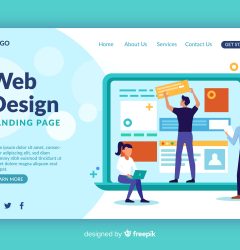19 Oct

|
Getting your Trinity Audio player ready...
|
The success of digital products is greatly influenced by the interwoven aspects of product design known as user interface (UI) and user experience (UX). UI is concerned with the interactive and visual components that make up an interface, whereas UX concentrates on users’ total experience when interacting with a product. Whether you’re considering enrolling in a UX/UI Design course or are just curious about the differences between UI vs UX, it’s important to have a firm grasp on the interplay between user experience and user interface. In this blog, we’ll discuss how UI affects UX and why it’s crucial for producing outstanding digital experiences.
Table of Contents
What Are User Interfaces and User Experiences?
Let’s start with some definitions before we go into how UI affects UX:
A digital product’s User Interface (UI) includes its aesthetics, structure, and interactivity. Everything the user sees and interacts with, from buttons and menus to forms and colour schemes, falls under this category.
UX (User Experience) is a more general term that refers to the full process that a user goes through when engaging with a product. Usability refers to how people feel about and interact with a product from the moment they first hear about it until they no longer use it.
The Effects of User Interface Design on the Eyes
Its user interface forms users’ first impressions of a digital product. It’s what people see and do when they access a website or use an application. The style, colour palette, typography, and visuals used in the UI contribute significantly to consumers’ first impression of the product.
An appealing and well-designed interface makes a good first impression, drawing the user in and making them want to learn more. This first impression is important since it may shape their overall feelings about the product. An organised and straightforward user interface (UI) makes it simple for customers to learn and utilise a product. Clean designs, uniform aesthetics, and the sensible positioning of controls improve the user experience.
The user interface design may communicate a brand’s identity and character. Maintaining a unified brand identity helps consumers remember and identify with a product.
Simple Navigation
The navigational structure of a user interface has a significant impact on the user experience. Menus, buttons, and links are all UI components contributing to the user’s ability to move about the product.
- Menus and navigation bars should be user-friendly so users can quickly access the necessary information. An easy-to-navigate menu may make using the site much more pleasurable.
- Elements that may be clicked or tapped should be created with usability in mind. This includes buttons, icons, and links. A great UX is bolstered by UI components that react correctly to user interactions.
- The learning curve may be shortened by keeping the UI design components consistent, such as positioning navigation controls.
Ability to Provide and Receive Visual Feedback
The results of the user’s activities are communicated to them in a visible format through UI components. This input is vital to the development of a user-friendly UI.
User Interface components that change appearance when clicked, progress bars, loading animations, and error messages are all examples of feedback mechanisms that keep users in the loop.
Having a user interface that responds to the size of the screen is referred to as “responsive design.” A smooth transition across devices bolsters a great user experience.
Universality and easiness of access
UI design is crucial when making a product usable by people of varying abilities. Inclusive UX necessitates using accessibility features such as alt text for pictures, keyboard navigation, and appropriate contrast in colour selections.
The well-designed user interface (UI) elements are useable by people of varying abilities. One of the most important aspects of UI design is adhering to accessibility rules and standards. When a product is compliant, it means it abides by all applicable laws and standards of conduct.
Raising Participation Rates
User engagement is crucial to a product’s UX, and UI design may affect this metric.
Visual elements, animations, and interactivity are all ways to capture and hold your audience’s attention.
Tiny, enjoyable animations and feedback features, such as a heart symbol changing colour when loved, increase user engagement and happiness.
Influence on Emotions
A user’s mood and experience might be affected by the interface design. User experience may be affected by the usage of elements such as colour, graphics, and even the selection of icons.
Whether it’s a tranquil design for a meditation app or a lively design for a gaming app, UI may connect emotionally with consumers.
Conclusion
Interface design and user experience go hand in hand. User interface (UI) design is concerned with how users engage with a product visually and via interaction, which directly impacts UX. The visual attractiveness, usability, accessibility, and emotional effect of a product may all be improved by careful UI design, which improves the UX. To create digital products that consumers love, meet their demands, and leave a lasting impression on them, it’s important to grasp the deep influence of UI on UX. Whether you’re taking a UX/UI design Course or just curious about the differences between UI and UX, this is true.


